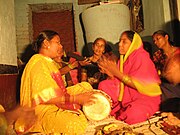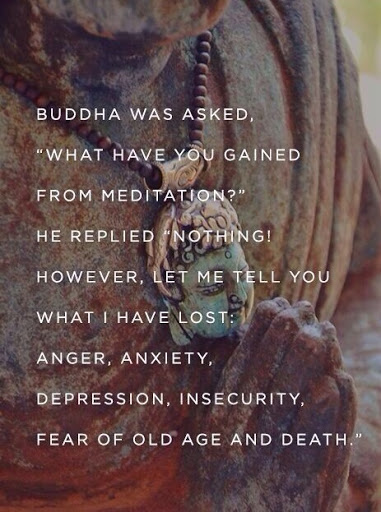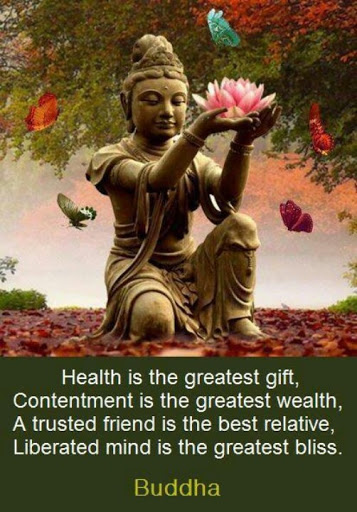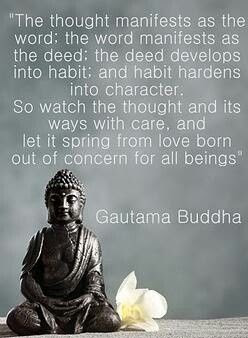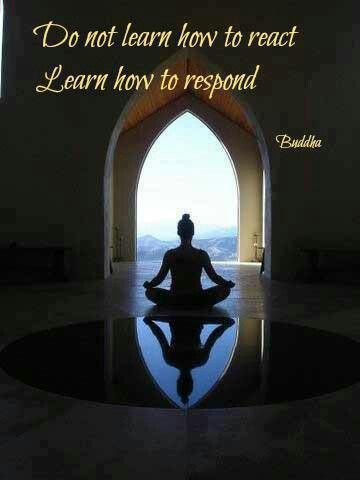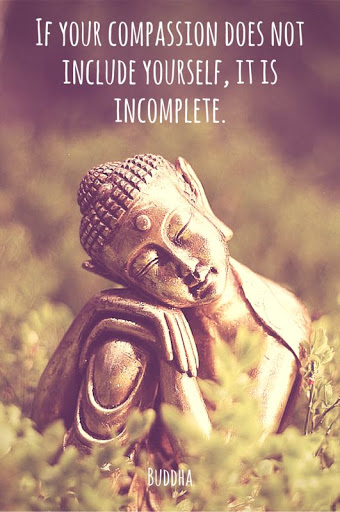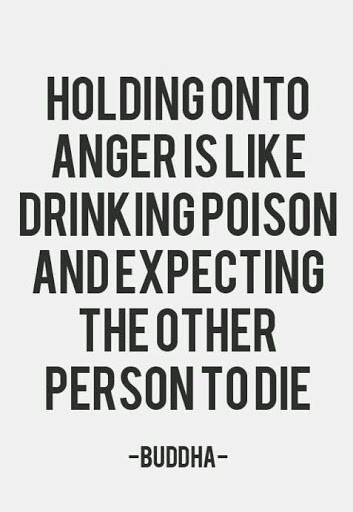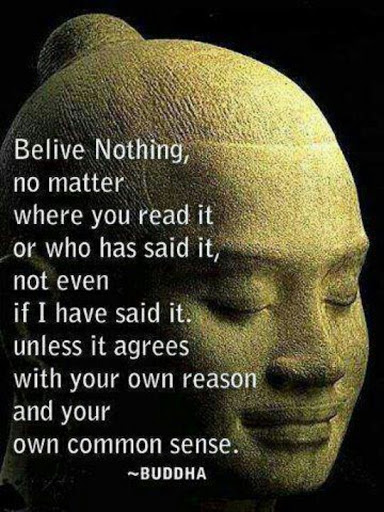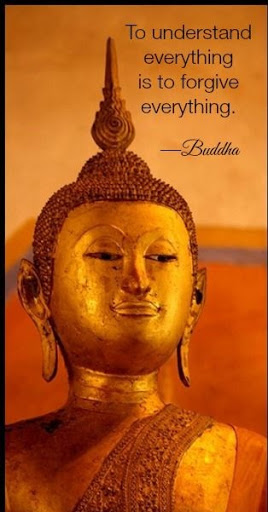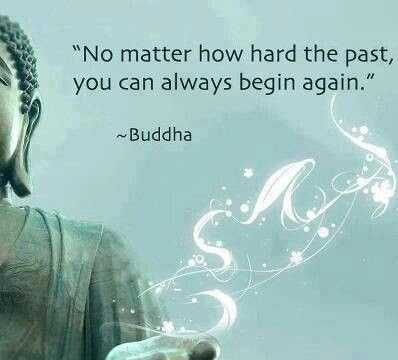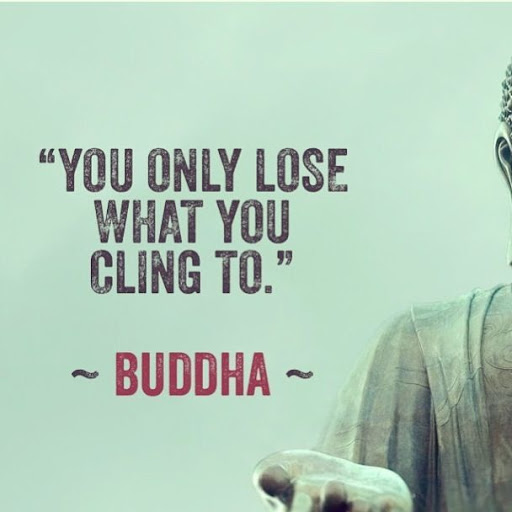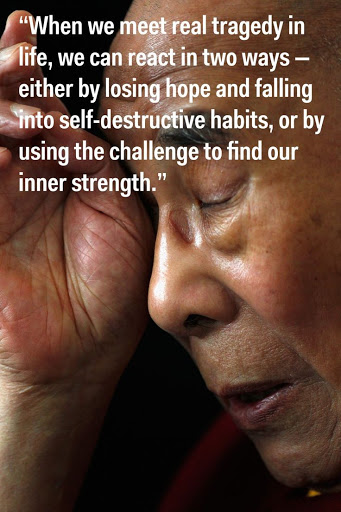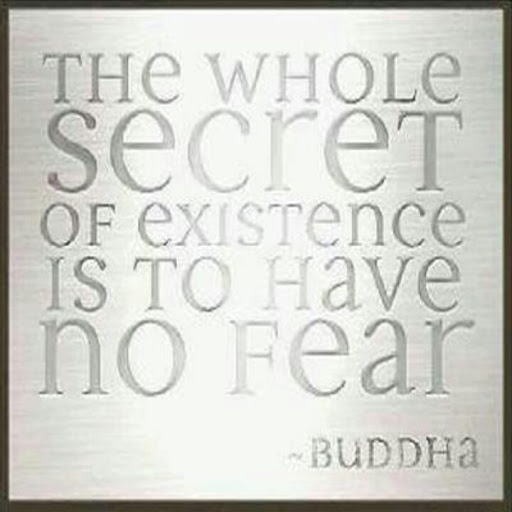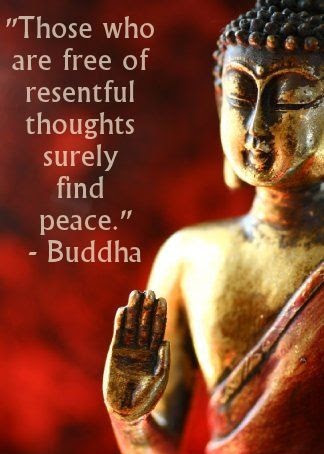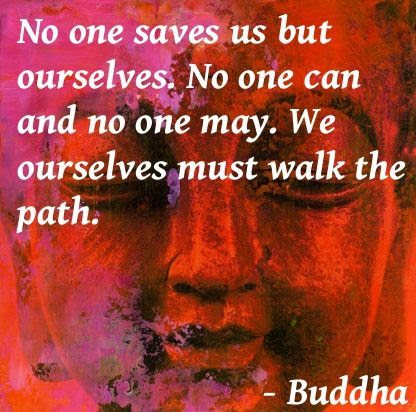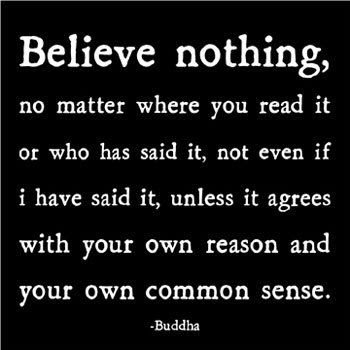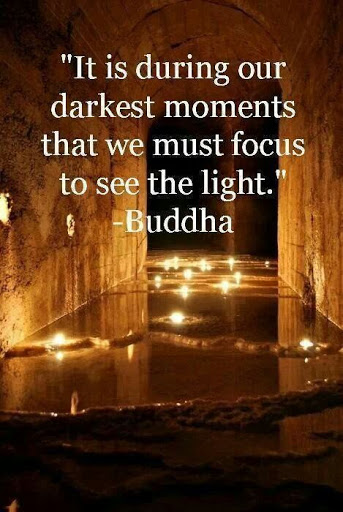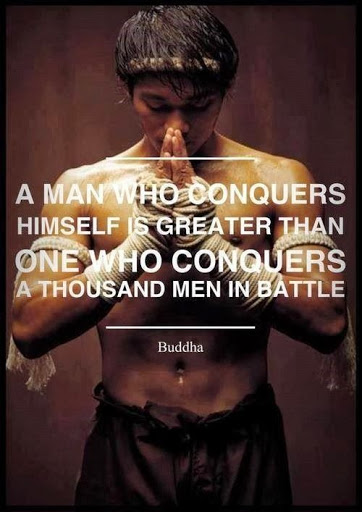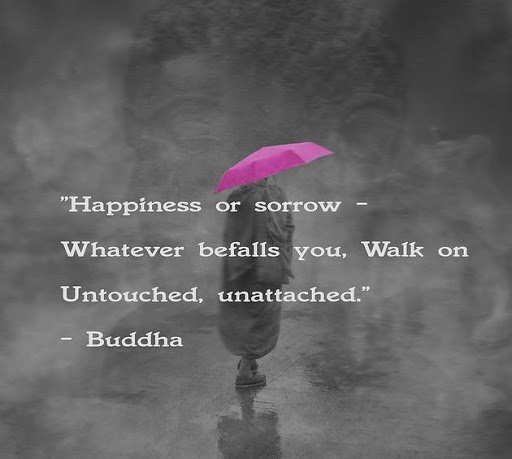Free Online FOOD for MIND & HUNGER - DO GOOD 😊 PURIFY MIND.To live like free birds 🐦 🦢 🦅 grow fruits 🍍 🍊 🥑 🥭 🍇 🍌 🍎 🍉 🍒 🍑 🥝 vegetables 🥦 🥕 🥗 🥬 🥔 🍆 🥜 🎃 🫑 🍅🍜 🧅 🍄 🍝 🥗 🥒 🌽 🍏 🫑 🌳 🍓 🍊 🥥 🌵 🍈 🌰 🇧🇧 🫐 🍅 🍐 🫒Plants 🌱in pots 🪴 along with Meditative Mindful Swimming 🏊♂️ to Attain NIBBĀNA the Eternal Bliss.
Kushinara NIBBĀNA Bhumi Pagoda White Home, Puniya Bhumi Bengaluru, Prabuddha Bharat International.
06/23/18
(08)
LESSON Mon Jul 03 2007-
(2660 Sat 23 Jun LESSON)
Buddha Vacana
Poṭṭhapāda Sutta
22) Classical Croatian -Klasični hrvatski,
23) Classical Czech-Klasická čeština,24) Classical Danish- Klassisk dansk,
25) Classical Dutch-
Klassiek Nederlands,
26) Classical English,
27) Classical Esperanto-Klasika Esperanto,
klassikaline eesti keel,in 1) Classical Magadhi, 2) Classical Prakriti,3) ClassicalTipiṭaka (Cyrillic), 4) Classical Pāḷi, 5) Classical Afrikaans -Klassieke Afrikaans,6) Classical Albanian -Klasike Shqiptare,7) Classical Amharic-ጥንታዊ አልባኒያ,,8) Classical Arabic-
اللغة العربية الفصحى
9) Classical Armenian- Դասական հայերեն,10) Classical Azerbaijani-Klassik azərbaycanl,11) Classical Basque- Euskal klasikoa,12) Classical Belarusian-Класічная беларуская,13) Classical Bengali-ক্লাসিক্যাল বাংলা,14) Classical Bosnian- Klasični Bosanski,15) Classical Bulgarian- Класически български,16) Classical Catalan-Català clàssic,17) Classical Cebuano,18) Classical Chichewa-Chikale cha Chichewa,19) Classical Chinese (Simplified)-古典中文(简体),20) Classical Chinese (Traditional)-古典漢語(繁體),21) Classical Corsican-Corsa Corsicana,
from
Analytic Insight Net -

Online Tipiṭaka Research and Practice University and related NEWS through
http://sarvajan.ambedkar.org
in
105 CLASSICAL LANGUAGES
Online Tipiṭaka Research and Practice University and related NEWS through
http://sarvajan.ambedkar.org
in
105 CLASSICAL LANGUAGES
Paṭisambhidā
Jāla-Abaddha Paripanti Tipiṭaka Anvesanā ca Paricaya Nikhilavijjālaya ca ñātibhūta Pavatti Nissāya
Jāla-Abaddha Paripanti Tipiṭaka Anvesanā ca Paricaya Nikhilavijjālaya ca ñātibhūta Pavatti Nissāya
http://sarvajan.ambedkar.org
anto 105 Seṭṭhaganthāyatta Bhāsā
anto 105 Seṭṭhaganthāyatta Bhāsā
is
an Online GOOD NEWS CHANNEL FOR WELFARE, HAPPINESS AND PEACE FOR ALL
SOCIETIES Catering to more than 3000 Emails: 200 WhatsApp, Facebook and
Twitter.
an Online GOOD NEWS CHANNEL FOR WELFARE, HAPPINESS AND PEACE FOR ALL
SOCIETIES Catering to more than 3000 Emails: 200 WhatsApp, Facebook and
Twitter.
is the most Positive Energy of informative and research oriented site propagating the teachings of the Awakened One with Awareness the Buddha and on Techno-Politico-Socio Transformation and Economic Emancipation Movement followed by millions of people all over the world.
Rendering
exact translation as a lesson of this University in one’s mother tongue
to this Google Translation and propagation entitles to become a Stream
Enterer (Sottapanna) and to attain Eternal Bliss as a Final Goal.
2573 Tue 27 Mar 2018 LESSON
http://www.orgsites.com/oh/awa
Awakeness Practices
All 84,000 Khandas As Found in the Pali Suttas
Traditionally the are 84,000 Dharma Doors - 84,000 ways to get
Awakeness. Maybe so; certainly the Buddha taught a large number of
practices that lead to Awakeness. This web page attempts to catalogue
those found in the Pali Suttas (DN, MN, SN, AN, Ud & Sn 1). There
are 3 sections:
The discourses of Buddha are divided into 84,000, as to separate
addresses. The division includes all that was spoken by Buddha.”I
received from Buddha,” said Ananda, “82,000 Khandas, and from the
priests 2000; these are 84,000 Khandas maintained by me.” They are
divided into 275,250, as to the stanzas of the original text, and into
361,550, as to the stanzas of the commentary. All the discourses
including both those of
Buddha and those of the commentator, are divided into 2,547 banawaras,
containing 737,000 stanzas, and 29,368,000 separate letters.
BuddhaSasana-The Home of Pali
Buddha Vacana
— The words of the Buddha —
Classical Buddhism (Teachings of the Awakened One with Awareness) belong to the world, and everyone have exclusive rights:
is the most Positive Energy of informative and research oriented
site propagating the teachings of the Awakened One with Awareness the
Buddha and on Techno-Politico-Socio Transformation and Economic
Emancipation Movement followed by millions of people all over the world.
Rendering exact translation as a lesson of this University in one’s
mother tongue to this Google Translation https://translate.google.com
and propagation entitles to become a Stream Enterer (Sottapanna) and to
attain Eternal Bliss as a Final Goal. Analytic Insight-Net - FREE
Online Analytic Insight-Net Tipiṭaka Research & Practice University
and related NEWS through
http://sarvajan.ambedkar.org
in
105
CLASSICAL LANGUAGES

in 1) Classical Magadhi, 2) Clasical Prakriti,
https://dhammawheel.com/
Learning Buddha’s Word By Own Dialects Or Magadhi?
Quote
Post Fri Dec 02, 2011 1:38 am
Dear All,
In Vinaya Pitaka>Cula Vagga>Khuddaka Vatthu Khandaka>285(CSCD)
There were two Bhikkhus complained to the Buddha, that some of the
Bhikkhus were reciting the Buddha’s word by not using the Chandaso
language but their own dialects , thus they requested Buddha to unify
the recitation of Buddha’s word by using Chandaso language but refused
by the Buddha, then Buddha has spoke this:
Anujānāmi, bhikkhave, sakāya niruttiyā buddhavacanaṃ pariyāpuṇitu’’nti.
Translated by Prof.Rhys Davids & Oldenberg:
“I allow you, oh Bhikkhus, to learn the words of the Buddha, each in his own dialect”
But in the other hand, the Pali Tipitaka commentator, Ven. Bhadanta Achariya Buddhagosha in his commentary:
Sakāya niruttiyāti ettha sakā nirutti nāma sammāsambuddhena vuttappakāro māgadhiko vohāro.
“I ordain the words of the Buddha to be learnt in his own language (in Māgadhī, the language used by the Buddha himself)”.
Buddhist
forum about the Dhamma of Theravāda Buddhism. A discussion on all
aspects of Theravāda Buddhism. Learning Buddha’s Word By Own…
forum about the Dhamma of Theravāda Buddhism. A discussion on all
aspects of Theravāda Buddhism. Learning Buddha’s Word By Own…
https://www.quora.com/Did-
It should be Magadhi.
Because, Pali (पालि / பாளி) was not a vernacular language spoken during
the period of Shakyamuni, Siddhartha Gautama. As Magadhi Bhasha is
believed to be Siddhartha’s mother tongue, it is highly likely that he
delivered his teachings in that language.
Some linguists argue that Pali must simply be a text version of
Magadhi. In fact, the word “pali” simply means “line” or “mark” in
ancient Indo-Aryan languages (Prakrits and Sanskrit). It can be roughly
understood as “text” as the language Pali was used only after writing
system was introduced in ancient India.
Some other linguists
believe that Pali must be a mix of several Prakrit languages in order to
make majority of the ancient Indians to understand Buddha’s teachings.
However, it is very obvious that Buddha would not have used Pali during
his lifetime. It should be Magadhi.
Answer (1 of 6): It should be Magadhi. Because, Pali (पालि / பாளி) was not a…
http://panhinda.sirisaddharmaya.net/the-languages-used-in-hela-diva-in-buddhas-period/

The languages used in Hela Diva in Buddha’s period
All the rulers in Hela Diva (Deva Hela) mainly used two languages.
- Magadhi Prakruth language
- Hela Basa (Hela Language)
As a whole, the language of the ordinary citizens in the entire Hela Diva was Hela Basa. Hela Basa had been used as a spoken language and also as a written language. Hela Basa was used everywhere by ordinary citizens, in the day today life and also in their trading activities.
Prakruth Magadhi language was a language of the great scholars. Magadhi language was used for technology, science & craftsmanship and administration of the country. Magadhi
language was used commonly in the county of Magadha of which the city
of Rajagaha was the capital city. The scholars, rulers of the country,
clergy, Brahmans and some Counts learnt and used the Magadhi language. Everyone who used Maghadi language knew Hela Basa as well. The gap between Magadhi language and Hela language was not that much great. Maghadi language
was used to learn any particular skill & knowledge or any science.
It can be seen that the mass in the general public did not use the
profound Maghadi language.
Buddha used Maghadi language to teach Dhamma in all the sixteen states in Janbudveepa Hela Diva. The Dhamma preached in Maghadi language was easily understood by the common people who used Hela Basa as well. In the ancient times there lived scholars in Hela Diva who knew Hela Basa as well and they present Artha, Dharma, Nirukthi and Patibhana for the intellectual Buddha Dhamma which was taught in Maghadi language. Because of this, Buddha Dhamma preached in Magadhi language by Gautama Buddha was analyzed during that period itself and Hela Commentaries were written for them. Hela Basa was a written language, but not the Maghadi language. Because of this, within the same period of time, Commentary writing (Attha katha)[2] in Hela Basa was done for the Buddha Dhamma preached by Gautama Buddha. In order to analyze and present explanations for the teachings of Buddha, in the ancient times in Hela Bima, five Artha kathas written in Hela Basa had been used and they are Hela Atuwa, Kurundi Atuwa, Budukali Atuwa, Seehala Attha Katha and Mahaatta Katha. All these Attha Kathas were written on Buddha Dhamma preached by Gautama Buddha in Maghadi language. These original Hela Atuwa could be seen even in the Anuradhapura period. The alphabet used for Magadhi language and Hela Language was the same. There were no two different alphabets. Both these languages used a methodology of Prakrit letters.
But by this time, what used in India were the Brahmi letters and the
Sanskrit language. The ordinary citizens in India never used Maghadi language or Hela Basa. Because of this, one can notice that there are certain differences between the letters used in Lanka in the very old age in Helabima,
which is the Buddha’s period even before Anuradhapura period, and the
letters used in Anurahapura after Ashoka’s period. The consequence of
this were that the inscriptions reader of the Anuradhapura period
experienced difficulties in reading inscriptions written in Buddha’s
period in Hela Diva. But the pattern of the letters in
Anuradapura period and Ashoka period was very similar. This is because
of the influence from India. In the ancient Hela Diva, rulers and some scholars from Yakkha Hela where Yakkha & Naaga tribes lived knew both languages, Maghadi and Hela Basa. Rulers of Yakkha tribe such as Saathaagira and Hemawatha could understand the Dhamma preached by Gautama Buddha in Maghadi language. Even King Samana could understand Dhamma. And also the great King Wessawana introduced the enactment of Aataanaataa to Gautama Buddha in Magadhi language. Gautama Buddha preached the same to his disciples again in Magadhi language.
In the ancient times Arahant Mahinda Thero came to Hela Diva (Lanka), went to the capital city of Rajagaha (Ampara) in the kingdom of Magada, learnt both Magadhi language & Hela Basa for few years, took the Budu Kali Commentaries written in Hela Basa to Anuradhapura and preached Buddha Dhamma to King Dewana Paathis in both Magadhi language & Hela Basa. This means that most of the people lived in the kingdom of Anuradhapura too knew Hela Basa and Magadhi language very well. Gradually, Helabasa became the language of the common man and Magadhi language became the language of the intellectuals.
This Magadhi language used by the intellectuals in all the sixteen states in Hela Diva and also in Yakkha Hela & Naaga Hela
had never ever been a language to be used by any region or any kingdom
in India. All the languages prevailed in India that day were based on
Sanskrit, but not Prakrit.
After preaching Dhamma by Gautama Buddha in Hela Diva, Dhamma spread out gradually to South India and the regions like east Kerala. When Buddha Dhamma was spread out in this manner, Maghadi language was used in the kingdoms in South and East India. As a result of this, books written in Hela Diva in Magadhi and Hela languages were translated in to Indian languages. Indian universities too started teaching Maghadi language and that is only after the spreading of Buddha Dhamma. Pela[3] is not a language. Pela Dhamma is nothing but the texts or passages of Buddha Dhamma in Magadhi language which are in the form of lines or arranged into lines. Buddha Dhamma
was presented in this manner, in the form of lines, as it helps in easy
reading by heart and registers in mind thoroughly. After 7 centuries,
in the latter part of Anuradhapura period, Pela Dhamma was transformed in to a language called Pali and later modified it as a language with grammar. Pali language which is used and learnt at present is a created, modified language and not the same Magadhi language used by Buddha to preach Dhamma. There are many differences between these two. Artha, Dharma and Nirukthi can be presented for the Magadhi terms which were used by the Buddha. Pali language has only customary meanings.
[2] Atta Katha or Attha Katha or Artha Katha
– the commentaries were written with the aim of explaining something in
a simple manner, to make easy the reader to understand certain
difficult words.
http://dharmadhatu-center.org/the-original-language-of.html
Dharmadhatu Center
H.H. Dorje Chang Buddha III
The Original Language of the Buddha and His Teachings
Extracted from the book “Buddhist Sutras: Origin Development” by Kogen Mizuno.
“The
original language of the sutras seems to have been Magadhi, which
Shakyamuni used in preaching. Of all the Indic language versions of
sutras used as Buddhist texts today, those written in Pali are the most
numerous and are widely used in the Southern Buddhist countries Sri
Lanka, Burma, and Thailand. According to Southern Buddhist tradition,
Pali is regarded as the language that Shakyamuni spoke, and therefore is
called Magadhi or the fundamental language. However, recent studies
show that although a little of the Magadhi influence is still evident in
the Pali language, the basic characteristics of the two languages are
different.
“The
two important language families of India are Indic and Dravidian. All
Buddhist sutras were originally compiled in Indic languages, which
developed in various parts of India over a period of three or four
thousand years. In present day India more than ten major languages-
including Hindi, Urdu, Bengali, Bihari, Marathi, and Punjabi- belong to
this family, and together they number several hundred dialects. Sanskrit
and fourteen modern languages are now officially sanctioned by the
Indian constitution, and in a large house it is possible for several of
the recognized languages to be in use, since servants from different
areas and family members would all speak in their own languages or
dialects.
“This
rich linguistic heritage was noted in earlier times, when, for example,
in plays one could identify a character’s occupation and social status
through the prescribed language he or she spoke. Kings, ministers, and
Brahmans spoke Sanskrit, the most highly esteemed and inflected
language; queens, princesses, nuns and courtesans spoke a graceful
language called Shauraseni; the general populace, such as merchants and
artisans, spoke Magadhi; and the lower classes spoke Paishachi. Even
lyrics had their own pleasant to the ear language, Maharashtri.
“The
five languages just mentioned originated in the dialects of different
areas, but the languages in Shakyamuni’s time belonged to a period
earlier than that of these five languages. However, even in Shakyamuni’s
time, regional languages already differed, and each language had its
own unique characteristics, as we can see from the edicts of Ashoka,
issued about two centuries after the death of Shakyamuni. Ashoka had his
edicts carved on large rocks and stone pillars, and one particular
edict was written in a different language in each of the eight areas
where it has been found. The languages of the edicts in India, which can
be divided into four or five regional groups, correspond to the five
languages used in drama of later periods. In time they became regional
languages of the Apabhramsha family, and still later they developed into
the modern Indic languages.
“The
language Shakyamuni spoke was the one in general use around the middle
reaches of the Ganges, where he was active. Since the area was later
called Magadha, its language was called Magadi (or Old Magadhi), and
because many of Emperor Ashoka’s edicts have been found in this area, we
have an idea of what the Magadhi Shakyamuni spoke was like.
“In
the time of Shakyamuni, the Vedas, the holy scriptures of Brahmanism,
were transmitted in Vedic Sanskrit, which was the forerunner of
classical Sanskrit. Both Vedic Sanskrit and classical Sanskrit are
elegant, highly inflected, complex languages. The Vedic scriptures were
transmitted only to the educated upper classes, never to the lower
classes. Shakyamuni, who wanted his teachings to reach all classes of
society equally, thought that the lower classes would be the focus of
his ministry and therefore preached his teaching in Magadhi, the
everyday language of the common people, so that even the lower classes
could understand him.”
An
excerpt from “Bones, Stones, and Buddhist Monks: Collected Papers on
the Archaeology, Epigraphy, and Texts of Monastic Buddhism in India” by
Gregory Schopen
“We
know, and have known for some time, that the Pali canon as we have it-
and it is generally conceded to be our oldest source- cannot be taken
back further than the last quarter of the first century BCE, the date of
the Alu-vihara redaction, the earliest redaction that we can have some
knowledge of, and that-for a critical history- it can serve, at the very
most only as a source for the Buddhism of this period. But we also know
that even this is problematic since as Malalasekera has pointed out
‘…how far the Tipitaka and its commentary reduced to writing at
Alu-vihara resembled them as they have come down to us now, no one can
say.’ In fact, it is not until the time of the commentaries of
Buddhaghosa, Dhammapala, and others- that is to say the fifth to sixth
centuries C.E.- that we can know anything definite about the actual
contents of this canon.
“We
also know that there is no evidence to indicate that a canon existed
prior to the Alu-vihara redaction. Although Ashoka in his Dhabra Edict
specifically enjoined both monks and laymen to recite certain texts,
which he named, he nowhere in his records gives any indication that he
knew of a canon, or the classification of texts into nikayas.”
I
personally have great faith in the memory-power of the monks who
memorized the Buddhist Sutras from the time of the Buddha and
transmitted them verbally from generation to generation for about 400
years before they were actually written down. And in terms of dating the
earliest recorded Sutras, it is my understanding that parts of the
Sutta Nipata in Pali and parts of the Mahavastu in Buddhist Hybrid
Sanskrit (from the Shravastivadin tradition) are the oldest known
recorded Sutras- both dating back to about 350 years after the Buddha.
Again, I didn’t mean to be too long-winded in this explanation, but I
thought people might be interested in knowing a little more, if they
didn’t know already, about these questions of language and the Buddhist
Sutras.
A
little footnote: according to our tradition and the historical records
of Ancient China the earliest Sutra translated from the Indic languages
into Chinese was the Sutra in 42 Sections in 69 C.E.
Sincerely, in Dharma, Heng Shun
https://www.quora.com/What-language-did-Gautama-Buddha-speak-according-to-Indian-mythology-and-why-is-it-significant
What language did Gautama Buddha speak according to Indian mythology, and why is it significant?
Have this question too? Request Answers:
Request From Quora
3 Answers
The Buddha spoke in a language called Magadhi Prakrit.
Magadhi Prakrit is the spoken language of the ancient Magadha kingdom,
one of the 16 city-state kingdoms at the time, located in the eastern
Indian subcontinent, in a region around modern-day Bihār,
and spanning what is now eastern India, Bangladesh, and Nepal. The
first Magadha king is Bimbisara (558 BC –491 BC), during whose reign the
Buddha attained enlightenment. Both king Bimbisara and his successor
son Ajatashatru, were mentioned in several Buddhist Sutras, being lay disciplines, great friends and protectors of the Buddha.
Magadha empire, ~500 BCE
The Magadha kingdom later became part of the Mauryan Empire, one of the world’s largest empires in its time, and the largest ever in the Indian subcontinent.
Mauryan Empire, 265 BCE
Magadhi Prakrit is the official language of the Mauryan court. Its emperor “Ashoka
the Great” (ruled 273- 232 BCE) united continental India. During the
war to conquer Kalinga, the last Southern part of India not subject to
his rule, he personally witnessed the devastation that caused hundred of
thousands of deaths, and began feeling remorse. Although the annexation
of Kalinga was completed, Ashoka embraced the teachings of Buddhism, and renounced war and violence. He sent out missionaries to travel around Asia - his son Mahinda and daughter Sanghamitra, who established Buddhism in Ceylon (now Sri Lanka) - and spread Buddhism to other countries.
Stone lion of Ashoka, later became symbol of modern India
Magadhi Prakrit is predominantly the language by which Emperor Ashoka’s edicts were composed in. These edicts were carved on stone pillars placed throughout the empire.
The inscriptions on the pillars described edicts about morality based on Buddhist tenets.
Ashoka Pillar at Feroze Shah Kotla, Delhi, written in Magadhi, Brami and Urdu
Geographically,
the Buddha taught in Magadha, but the four most important places in his
life are all outside of it. It is likely that he taught in several
closely related dialects of Middle Indo-Aryan, which had a high degree
of mutual intelligibility.
Magadhi Prakrit shares a genealogy
with Sanskrit – an Indo-Aryan language, with commonalities to ancient
German and Persian. The sacred Hindu Vedas and Upanishads
text are written in this language. Since Buddha was a prince, he would
have spoken Sanskrit, the language of Brahmins and aristocrats, and
used in formal religious texts. But many of his followers were common
people who would not have been educated in Sanskrit. The Sutra record
stated that the Buddha was opposed to the use of Sanskrit for his
preaching. He preferred the vernacular Magadhi for his preaching and
sermon.
Although the Buddha’s teaching was in Magadhi, there is
no written record of his teaching in this language. Immediately after
his death, under the sponsorship of king Ajatashatru, his elder student
Mahakassapa organized the “First Buddhist council”
during which Ananda, the Buddha’s cousin and long time aide, with
prodigious memory, was asked to recite his teachings, which were
carefully memorized.
When the Buddhist teachings started to
spread during Ashoka’s time, they were continually translated into the
local dialects and languages.
When the teachings started to be
written down, around three or four hundred years after the death of the
Buddha, there already existed several different, carefully memorized,
versions - one of which is the Pali version. Only one complete version of the set of Vinaya (inventories of rules to be observed by monks/nuns), Sutra (record of the discourse of the Buddha) and Abhidharma (Commentaries) has survived in the Pali language, preserved by the Theravadin
School. Consequently this copy has been regarded as the authoritative
account of the Buddha’s teachings in Sri Lanka, Burma, Thailand, Laos
and Cambodia, the home of the Theravadin School.
Howe…
https://en.wikipedia.org/wiki/Magahi_language
Magahi language
Jump to navigation
Jump to search
| Magadhi | |
|---|---|
| मगही magahī | |
| Native to | India |
| Ethnicity | Magahi people |
|
Native speakers
|
14 million (2001 census)[1] Census results conflate some speakers with Hindi.[2] |
|
Early form
|
|
| Devanagari, Kaithi | |
| Official status | |
|
Official language in
|
|
| Language codes | |
| ISO 639-2 | mag |
| ISO 639-3 | mag |
| Glottolog | maga1260[4] |
Jump to navigation
Jump to search
| Magadhi | |
|---|---|
| मगही magahī | |
| Native to | India |
| Ethnicity | Magahi people |
|
Native speakers
|
14 million (2001 census)[1] Census results conflate some speakers with Hindi.[2] |
|
Early form
|
|
| Devanagari, Kaithi | |
| Official status | |
|
Official language in
|
|
| Language codes | |
| ISO 639-2 | mag |
| ISO 639-3 | mag |
| Glottolog | maga1260[4] |
The Magahi language, also known as Magadhi, is a language spoken in Bihar, Jharkhand and West Bengal states of eastern India. Magadhi Prakrit was the ancestor of Magadh, from which the latter’s name derives.[5] Magadhi has approximately 18 million speakers.
It has a very rich and old tradition of folk songs and stories. It is spoken in ten districts of Bihar (Gaya, Patna, Jehanabad, Aurangabad, Nalanda, Nawada, Arwal, Lakhisarai, Sheikhpura, Jamui) and eight districts of Jharkhand (Palamu, Chatra, Hazaribag, Koderma, Deoghar, Jamtara, west singhbhum, Bokaro, Dhanbad, Giridih). In West Bengal, it is spoken in Malda district.[6]In Odisha, it is spoken in kendujhar district.
Magahi or Magadhia language derived from the ancient Magadhi Prakrit, which was created in the ancient kingdom of Magadha, the core of which was the area south of the Ganges and east of Son River. It is believed to be the language spoken by Gautama Buddha. It was the official language of the Mauryan court, in which the edicts of Ashoka were composed.
The name Magahi is directly derived from the name Magadhi
Prakrit, and educated speakers of Magahi prefer to call it “Magadhi”
rather than “Magahi”.
Though the number of speakers in Magahi is large, it has not been
constitutionally recognised in India. In Bihar Hindi is the language
used for educational and official matters.[7] Magadhi was legally absorbed under Hindi in the 1961 Census.[8]
Contents
- 1 History
- 2 Speakers of Magahi
- 3 Scripts and literary tradition
- 4 Phonology
- 5 Morphology
- 6 See also
- 7 References
- 8 External links
History
The ancestor of Magadhi, Magadhi Prakrit,
formed in the Indian subcontinent in a region spanning what is now
India and Nepal. These regions were part of the ancient kingdom of Magadha, the core of which was the area of Bihar south of the Ganges.
The name Magahi is directly derived from the word Magadhi, and educated speakers of Magahi prefer to call it Magadhi rather than Magahi.[9]
Grammarian Kachchayano wrote of the importance of Magadhi, “There is a
language which is the root (of all languages); men and Brahmans spoke
it at the commencement of the kalpa, who never before uttered a human
accent, and even the supreme Buddhas spoke it: it is Magadhi.”[10]
The development of the Magadhi language into its current form is
unknown. However, language scholars have come to a conclusion that
Magahi, Maithili, Bhojpuri, Bengali, Assamese and Oriya
originated from the Mithila Prakrit or might be Bengali Prakrit during
the 8th to 11th centuries. These different dialects differentiated
themselves and took their own course of growth and development. But it
is not certain when exactly it took place. It was probably such an
unidentified period during which modern Indian languages begin to take
modern shape. By the end of the 12th century, the development of Apabhramsa reached its climax. Gujarati,
Marathi, Bengali, Assamese, Oriya, Maithili and other modern languages
took definite shape in their literary writings in the beginning of the
14th century. The distinct shape of Magadhi can be seen in the Dohakosha written by Sarahapa and Kauhapa. Magahi had a setback due to the transition period of Magadha administration.[11]
Traditionally, strolling bards recite long epic poems in this dialect,
and it was because of this that the word “Magahi” came to mean “a bard”.
Kaithi is the script generally used for it. The pronunciation in Magahi
is not as broad as in Maithili and there are a number of verbal forms
for each person.[12]
Historically, Magahi had no famous written literature. There are many
popular songs throughout the area in which the language is spoken, and
strolling bards recite various long epic poems
which are known more or less over the whole of Northern India. In
Magahi spoken area folk singers sing a good number of ballads.
Introduction of Urdu meant a setback to local languages as its Persian
script was alien to local people.
The first success for spreading Hindi occurred in Bihar in 1881, when Hindi displaced Urdu
as the official language of the province. After independence, Hindi was
given the sole official status through the Bihar Official Language Act,
1950.[13]
Speakers of Magahi
Magahi folk singers
Magadhi is spoken in the area which formed the core of the ancient kingdom of Magadha - the modern districts of Patna, Nalanda, Gaya, Jehanabad, Arwal, Aurangabad, Lakhisarai, Sheikhpura and Nawada. Magahi is bounded on the north by the various forms of Maithili spoken in Mithila across the Ganga. On the west it is bounded by the Bhojpuri, On the northeast it is bounded by Maithili and Angika. A blend of Magahi and known as Kharostha (Khortha) is spoken by non-tribal populace in North Chotanagpur division of Jharkhand which comprises districts of Bokaro, Chatra, Dhanbad, Giridih, Hazaribagh, Koderma and Ramgarh.
The number of Magadhi speakers is difficult to indicate because of
unreliable sources. For most of the magahi-speakers, Hindi is the
generic name for their language. People of Southern Bihar and Northern
Jharkhand are mostly speakers of Magadhi language.[14] Current estimates indicate approximately 18 million Magadhi speakers.
Scripts and literary tradition
Magadhi is generally written using Devanagari script. A later-developed script of Magadhi is Kaithi.[12]
There have been effort by scholars in the Magahi area to explore and
identify a literary tradition for Magadhi. Magadhi has a rich tradition
of folk literature, and in modern times there have been various
activities in the publication of literary writing. Magahi Parishad was
established in Patna in 1952, which was renamed Bihar Magahi Mandal. Magadhi, a journal, was started at the same time, which was renamed Bihan,
meaning “tomorrow” or the coming dawn. Later Akhil Bhartiya Magahi
Sahitya Sammelan was established by Dr Ram Prasad Singh in 1977 and
published a well known magazine ” Magahi Lok”. Another very famous
monthly journal was started by Magahi Academy, Gaya edited by Dr. Ram
Prasad Singh. Another magazine “Magadhi” is published by Akhil Bhartiya
Magahi Bhasa Sammelan. It is headed by Kavi Yogesh.[15] Nalanda Open University offers various courses on Magahi.[16].
Maghi language has a lot of poets who with their writings has
influenced the common mass a lot. Among those poets the name of Maghi
Kokil JAIRAM SINGH is indelible. He is one of the scintillating gems of
Maghi Sahitya. His song “बदरिया गाव है कजरिया” created an unforgettable
imprint on the minds of Maghi lovers. His recently published book
“चिजोर” contains a variety of poems.
Weekdays
| English | Magahi/Magadhi | मगही/मागधि | Hindi | Urdu |
|---|---|---|---|---|
| Sunday | Eitwaar | एतवार | Ravivwaar | Eitwaar |
| Monday | Somaar | सोमIर | Somwaar | Peer |
| Tuesday | Mangal | मंगल | Mangalwaar | Mangal |
| Wednesday | Budhh | बुध | Buddhwaar | Budhh |
| Thursday | Barashpat/Bife | बृहस्पत | Guruwaar/Brihaspatiwar | Jumeraat |
| Friday | Sookkar/Sookra | शुक्कर | Shukrawaar | Jumma |
| Saturday | Sanichchar | शनिच्चर | Shaniwaar | Hafta |
Fruits and vegetables
| English | Magahi/Magadhi | मगही/मगधी | English | Magahi/Magadhi | मगही/मगधी |
|---|---|---|---|---|---|
| Mango | Aam | आम | Apple | Seo | सेव |
| Orange | Narangi/Santola /Kewla | नारंगी/संतोला/केवला | Lemon | Lemu | लेमू |
| Grapefruit; pomelo | Mausmi/ | मौसमी | Papaya | Papita | पपीता |
| Guava | Amrud | अमरुद | Melon | Jaamun/phnela | जामुन/फ्नेला |
| Sweet Potato | Shataalu | शतालु | Pomegranate | Anāra/Bidānā | अनार/बिदाना |
| Grape | Angoor | अंगूर | Custard apple | Shareefā | शरीफा |
| Banana | Kairaa/Kēlā | कैरा/केला | Lychee | Litchi | लीच्ची |
| Tomato | Tamaatar | टमाटर | Jackfruit | Katahar/kathal | कटहर/कटहल |
| Jack Fruit | Bhuikatahar | भुईकटहर | Watermelon | Tarabūjā | तरबूजा |
| Muskmelon | kharabūjā/Lālmi | खरबूजा/लालमी |
Family relations
| English | Magahi/Magadhi | मगही/मगधी |
|---|---|---|
| Father | Baabuji / PitaJee | बाबूजी / पिताजी |
| Mother | Maiya / Maay | मईया / माय |
| Sister | Bahin / Didi | दीदी / बहिन |
| Brother | Bhaai / Bhaiya | भाई / भईया |
| Grandfather | Baaba / Daada | बाबा / दादा |
| Grandmother | Mama / Daadi | मामा / दादी |
| Sister-in-law | Bhaujai / Bhauji | भौजाइ / भौजी |
Spoken trends
Addition of “Waa” or “eeya” to nouns and sometimes verbs
For male nouns:
In Hindi with Magahi/Magadhi style – “सलमनवा के पास एगो मोटरसाइकिल है”
In true Magahi/Magadhi language - “सलमनवा भिजुन एगो मोटरसाइकिल हई”
English translation – Salman has a motorcycle.
For female nouns:
In Hindi with Magahi/Magadhi style – “रिमिया रिया सेनवा के बहन है”
In true Magahi/Magadhi language - “रिमिया रिया सेनवा के बहीन हई”
English translation – Rimi is the sister of Riya Sen
In Hindi with Magahi/Magadhi style – “लठीया चला के तोर कपरवे फोर देंगे”
In true Magahi/Magadhi language - “लठीया चला के तोहर कपरवे/कपरवा फोर देम ”
English translation – (I’ll) throw the baton and crack your skull
In Hindi with Magahi/Magadhi style – “जानते हो, मोहना का बाप मर गया है”
In true Magahi/Magadhi language - “जानअ ह, मोहना के बाप / बाबूजी / बाबा /बावा मर् गेलथिन”
English translation – You know, Mohan’s dad has died
Apart from these all other females names and other nouns get “waa” in their ends.
Addition of “eeye” or “ey” in adverbs, adjectives and pronouns
In Hindi with Magahi/Magadhi style – हम बहुत नजदिके से आ रहें है
In true Magahi/Magadhi language – हम/हमनी बहुत नजदिके (बहुते नज़दीक)/भीरी से आवईत हिवअ/ आ रहली हे
English translation – We are coming from a very near place
Within Magahi, one can find lot of variation while moving from one
area to other, mainly end of the sentence is with a typical tone like
Hiva, thau, hein etc. It is a rich language with lot of difference one
can see while saying something with respect to elder or one with peer or
younger. For example, there are two counterparts of Hindi “aap” in
existence described in following sentences -
In Hindi—आप आज बाजार गये थे क्या?
In Magahi (To an elder) — तूँ आज बजार गेलहु हल का?
In Magahi (To highly respected persons or teachers) — अपने आज बजार गेलथिन हल का?
In Magahi (To an younger) — तूँ आज बजार गेलहीं हल का?
Magahi is a language of the common people in area in and around
Patna. It has few indigenous written literature, though a number of
folk-tales and popular songs have been handed down for centuries from
mouth to mouth and this remain main form of knowledge transfer in
literature. Strolling bards also known by name “Bhad” recite long epic
poems in this dialect, and sing verses in honor of the heroic
achievements of legendary princes and brave men of ancient time like
“Alha aur udal”. But no manuscriptic text has been seen except that
nowadays people have given it a book form.
Phonology
Research work done in this field:
- Dr Munishwar Jha - “Magadhi And Its Formation,” Calcutta Sanskrit College Research Series, 1967, 256 pp
- Dr Saryu Prasad - “A Descriptive Study of Magahi Phonology”, Ph.D. thesis submitted to Patna University.
- Dr A.C. Sinha (1966) - “Phonology and Morphology of Magahi Dialect”, Ph.D. thesis submitted to University of Poona.
|
This section needs expansion. You can help by adding to it. (October 2008)
|
- Dr Sweta Sinha (2014) - “The Prosody of Stress and Rhythm in
Magahi”, Ph.D. thesis submitted to Jawaharlal Nehru University, New
Delhi. - Dr. Sweta Sinha (2018)- “Magahi Prosody”, Bahri Publications: New Delhi. ISBN 978-93-83469-14-7.
Morphology
Research
work done in this field: Dr A.C. Sinha (1966) - “Phonology and
Morphology of Magahi Dialect”, Ph.D. thesis submitted to University of
Poona.
|
This section needs expansion. You can help by adding to it. (October 2008)
|
See also
- Culture of Magadh Region
- Culture of Bhojpuri Region
- Culture of Mithila Region
- Culture of Angika Region
- Magadhan language
References
- [2] Archived July 3, 2008, at the Wayback Machine.
External links
- Magahi - A Historical language
- Jain Scriptures
- Magahi Detailed Description by Grierson, G.A.
- Magahī Phonology: A Descriptive Study by Saryoo Prasad

51 Best Buddha Quotes With Pictures about Spirituality & Peace

Best Life Quotes By Buddha
Gautama Buddha also is known as Siddhartha Gautama. With the help of
Siddhartha Gautama teachings, Buddhism takes place. Gautama Buddha was
born in Lumbini. Siddhartha Gautama realizes that meditation is the only
path to awakening. Gautama decides to live his life as a Yogi. Gautama
starts seated under a Pipal tree which is known as Bodhi Tree. Gautama
meditation regular 49 days, to have attained Enlightenment.
Gautama Buddha, also known as Shakyamuni Buddha or Siddhartha Buddha
or Buddha founded Buddhism. He was one of the many Sramana philosophers
of his time. According to the Buddhist tradition, Buddha was born in
Lumbini, now in Nepal. He was brought up by his mother’s younger sister
and his father wanted him to be a great king. It is said that his father
shielded him from religious teachings and human sufferings.
Buddha was married to Yashodhara at the age of 16 and they both had a
son named Rahula. When he was 29; he saw an old man despite his
father’s efforts to hide from him the aged, suffering old people. This
depressed him and he quit his palace for the life of a mendicant.
According to the early Buddhist texts, when Buddha realized that
meditative dhyana was the right path to awakening. Several life lessons
and teachings have been provided by Buddha in his biographies and
Buddhist texts.
One of my all time favorite Buddha quote is, “As you walk, eat, and
travel, be where you are. Otherwise, you will miss most of your life”.
This is quite true in all aspects of our life. Be it something that you
are doing, eating or be it someplace you are traveling to; we can never
experience life to its best if we are not completely present
there, at that particular moment. We need to be mentally and physically
present to see life happening. That is how we will never miss a single
bit of our life.
Buddha has taught us so many life lessons; each lesson is a gem and
gives us an opportunity to understand the world and make it a better
place. His teachings and ideologies help us walking on this path of life
and helping us throughout the journey. Buddha once said, “You only lose
what you cling to”. It is very difficult to not get used to the things
that we have in our life; the things that help us grow and be what we
are. And we can only lose those things that we cling on to; how can
someone lose something that he never had. To live a happy and content
life; we must not forget the lessons that Buddha have taught us, they
will help us face the hardships of life with a smile on our face and
faith in our heart because, in the end, it is the faith that matters.
From that time Gautama was known as Lord Buddha. Buddha changes
people like Angulimala, Cannibals such as Alavaka. Buddha totally
changed the lives of many who believed in him. Buddha believed that by
meditation everyone can get to awakening. Gautam Buddha also known for
giving best quotes about human life. He gave so many spiritual and
inspirational quotes to this world. Which is really helpful for those
who follow them in their life.
Here we are with Best Buddha Quotes which will help many of us to change our lives.
1. “In the end, only three things matter: How much you loved,
how gently you lived, and how gracefully you let go of things not meant
for you.”
2. “Buddha was asked,”what have you gaines from mediation?”
He replied “NOTHING”! However let me tell you what i have lost:
anger, anxiety, depression, insecurity, fear of old age and death.”
3. “When the student is ready, the teacher will appear.”
4. “The less you respond to negative people, the more peaceful your life will become.”
5. “Health is the greatest gift, contentment is the greatest
wealth, A trusted friend is the best relative, liberated mind is the
greatest bliss.”
6. “The thought manifests as the word: the word manifests as the
deed: the deed develops into character. So watch the thought and its
ways with care, and let it spring from love born out of concern for all
beings.”
7. “Do not learn how to react learn how to respond.”
8. “If your compassion does not include yourself, It is incomplete.”
9. “Everything that has a begining has an ending.
Make your peace with that and all will be well.”
10. “If anything is worth doing, do it with all your heart.”
11. “Your worst enemy cannot harm you as much as your own unguarded thoughts.”
12. “The root of suffering is attachment.”
13. “Holding onto anger is like drinking poison and expecting the other person to die.”
14. “All that we are is the result of what we have thought.”
15. “Do not dwell in the past, do not dream of the future, concentrate the mind on the present moment.”
16. “What you think you become, what you feel, you attract. what you imagine, you create.”
17. “Nothing can harm you as much as your own thoughts unguarded.”
18. “Relax nothing is in control.”- Buddhist Meditation quotes by Lord Buddha.
20. “The trouble is you think you have time.”
21. “Your work is to discover your world and then with all your heart give yourself to it.”
22. “Believe nothing, no matter where you read it or who has
said it, not even if i have said it. Unless it agrees with your own
reason and your own common sense.”
23. “Do not dwell in the past, do not dream of the future, concentrate the mind on the present moment.”
24. “On the long journey of human life… Faith is the best of companions.”
25. “To understand everything is to forgive everything.”
26. “Holding onto anger is like drinking poison and expecting the other person to die.”
27. “No one saves us but ourselves. No one can and no one may. We ourselves must walk the past.”
28. “There is no path to happiness: Happiness is the path.”
29. “No matter how hard the past, you can always begin again.”
30. “If you want to fly, give upeverything yhat weighs you down.”
31. Short life quotes of Buddha- “you only lose what you cling to.”
32. “when we meet real tragedy in life, we can react in two
ways- Either by losing hope and falling into self-destructive habits or
by using the challenge to find our inner strength.”
33. Buddha meditation quotes – “Nothing can harm you as much as your own thoughts unguarded.”
34. “Don’t rush anything. When the time is right, it’ll happen..”
35. “The whole secret of existence is to have no fear.”
36. Real life quotes from Gautama Buddha – “Be kind to all creatures; this is the true religion.”
37. “Those who are free of resentful thoughts surely find peace.”
38. “No one saves us but ourselves. No one can and no one may. We ourselves must walk the path.”
39. “Believe nothing, no matter where you read it or who has said it, not even if i have said it, unless it agrees with your own reason and your own common sense.”
40. “It is during our darkest moments that we must focus to see the light”
41. “Quiet the mind, and the soul will speak.”
42. Inspirational quotes on karma by Buddha – “Be patient everything comes to you in the right moment.”
43. “if your compassion does not include yourself, it is incomplete.”
44. “Each morning we are born again. What we do today is what matters most.”
45. “A man who conquers himself is greater than one who conquers a thousand men in a battle.”
46. “All human unhappiness comes from not facing reality squarely, exactly as it is.”
47. “It is better to be hated for what you are than to be loved for what you are not.”
48. “He who does not understand your silence will probably not understand your words.”
49. “You will not be punished for your anger, you will be punished by your anger.”
50. “Happiness does not depend on what you haveor who you are it solely relies on what you think.”
51. “Happiness or sorrow – “whatever befalls you, walk on untouched, unattached.”
https://m.youtube.com/watch?v=
2) Clasical Prakriti
https://www.google.co.in/…/
Prakritis Yearning for Ananda
By: Meera Panigrahi
Sep 07, 2013 07:17pm
Tagore’s play Chandalika brings out the marginalization of women—as
outcaste and the subordination she is condemned to for just being
woman. The regressive and yet accepted norms of society are obstructions
in the path of liberation and dignity for the female. Tagore has
explored all the dimensions of female subjugation and her craving for
release from a dominant social structure that inhibits personal growth
and spiritual attainments.
The play is based on a Buddhist legend associated with one of the Buddha’s disciples named Ananda.
Chandalika as her name suggests, is an outcaste. This name is given to
her by the society, her own name being Prakriti. She possesses a
rebellious nature due to the social stigma she is cursed with. Even
peddlers refuse to sell her wares. No one from a higher caste would
receive water from her hands. She was also not allowed to draw water
from a common well.
The change comes in her life when Ananda the
Buddhist monk passes by and requests her to give him some water to
quench his thirst. After some hesitation she complies . She learns to
see herself in a new light. It is Ananda who opens her eyes by his
divine preaching of equality , and makes her aware of her true self.
Prakriti sees herself as a living, breathing human being and not as an
untouchable Chandlini . His magical words “Give me water” addressed to
the frightened girl negates her sense of being an outcaste. A holy man
asking for water from a chandilini was completely unheard of . She
thenceforth emerges as a new human being , full of vitality and
exuberance in her new found freedom.
She falls in love with him
and wants to possess him, but later realizes that in doing so, she would
be deflecting Anaanda from his chosen Path and hence lets him go.
Here are some fine extracts from the play:
MOTHER. Did you tell him that you are a Chandalini?
PRAKRITI. I told him, yes. He said it wasn’t true. If the black clouds
of Sravana are dubbed Chandal, he said, what of it? It doesn’t change
their nature, or destroy the virtue of their water. Don’t humiliate
yourself, he said; self-humiliation is a sin, worse than self-murder. ‘
PRAKRITI. He said that Janaki bathed in such water as this, at the
beginning of her forest exile, and the Guhak, the Chandal, drew it for
her. My heart has been dancing ever since, and night and day I hear
those solemn tones- ‘Give me water, give me water.’
PRAKRITI. I
want him. All unlooked for- he came, and taught me this marvelous truth,
that even my service will count with the God who guides the world. O
words of great wonder! That I may serve, I, a flower sprung from a
poison-plant! Let him raise that truth, that flower from the dust, and
take it to his bosom.
In the end Prakriti follows Ananda the ascetic, into a world of spiritual calmness chanting Buddham saranam gacchami .
जो नित्य एवं स्थाई प्रतीत होता है, वह भी विनाशी है। जो महान प्रतीत होता है, उसका भी पतन है। जहाँ संयोग है वहाँ विनाश भ…

https://books.google.co.in/
https://en.m.wikipedia.org/
Prakṛti, also Prakṛiti or Prakṛuti (from Sanskrit language प्रकृति,
prakṛti), means “nature”.[1][2] It is a key concept in Hinduism,
formulated by its Samkhya school, and refers to the primal matter with
three different innate qualities (Guṇas)
whose equilibrium is the basis of all observed empirical reality.[1][3]
Prakriti, in this school, contrasts with Purusha which is pure
awareness and metaphysical consciousness.[1] The term is also found in
the texts of other Indian religions such as Jainism,[4] and Buddhism.[5]
In Indian languages derived from Indo-European Sanskrit roots, Prakriti
refers to the feminine aspect of all life forms, and more specifically a
woman is seen as a symbol of Prakriti.[6]
Prakriti (Sanskrit:
प्रकृति) is a Vedic era concept, which means “making or placing before
or at first, the original or natural form or condition of anything,
original or primary substance.”[7] The term is discussed by Yāska (~600
BCE) in Nirukta, and found in numerous Hindu texts.[7] It connotes
“nature, body, matter, phenomenal universe” in Hindu texts.[6][8]
Yāska was an early Sanskrit grammarian who preceded Pāṇini (fl. 6-5th
century BCE[1]), assumed to have lived in the 7th century BCE. Nothing
is known about him other than that he is traditionally identified as the
author of Nirukta, the discipline of “etymology” (explanation of words)
within Sanskrit grammatical tradition.
It
has been said that a psychiatrist’s mind is like a doctor’s
handwriting. In my first English book, Parivarthana (the change), I have
made a mention about “Shrink”. I am of the opinion that a psychiatrist
would remain shrunk unless he does not come out from the western ideas
and….
has been said that a psychiatrist’s mind is like a doctor’s
handwriting. In my first English book, Parivarthana (the change), I have
made a mention about “Shrink”. I am of the opinion that a psychiatrist
would remain shrunk unless he does not come out from the western ideas
and….



Tweets
कई तरह के चमचे, चमचा युग किताब से


http://punjabijanta.com/…/america-enlisted-rss-in-one-of-t…/
January 08, 2018, 08:45:22 AM
Punjabi Janta Forums - Janta Di Pasand »
Lounge / Jail Pinjra »
News Khabran (Moderator: MyselF GhainT) »
America enlisted RSS in one of the Biggest Terrorist Organisations in the World
America enlisted RSS in one of the Biggest Terrorist Organisations in the World
« on: October 17, 2015, 01:08:31 PM »
A US-based risk management and consulting company has put the Rashtriya
Swayamsevak Sangh (RSS) in its category of ‘Threat Group’ and called it
“a shadowy, discriminatory group that seeks to establish a Hindu
Rashtra, a Hindu Nation.”
Terrorism Watch & Warning provides
intelligence, research, analysis, watch and warning on international
terrorism and domestic terrorism related issues; and is operated by OODA
Group LLC that helps clients identify, manage, and respond to global
risks and uncertainties while exploring emerging opportunities and
developing robust and adaptive strategies for the future.
The company had included RSS in its ‘Threat Group’ in April 2014. .
The websites describes: “The RSS is a shadowy, discriminatory group
that seeks to establish a Hindu Rashtra, a Hindu Nation. The group is
considered the radical ideological parent group of India’s ruling Hindu
nationalist party - the Indian Peoples Party (BJP). “
“The RSS is
a Hindu nationalist movement, a right wing group that was founded in
1925. Their philosophy, called Hindutva, was termed fascist by
Communists, and their main demand of the central government was that it
stop appeasing Muslims,” the description continues , adding, “Hindutva
has been translated to mean variously: Hindu pride, patriotism,
fundamentalism, revivalism, chauvinism, or fascism. The group
self-justifies by ‘asserting the natural rights’. “
In its ‘Intel
analysis,’ it further adds, “The RSS was banned in 1948 following the
assassination of Mahatma Gandhi by an ex-RSS member, Nathuram Godse. The
ban was lifted the following year. Since then, the group has gained
popularity. It later began the Bharatiya Janata Party (BJP), widely
considered the political arm of the RSS, which now heads the central
government of India. “
Describing violence as ‘Group Activities’
for the RSS, the site further says, “Violence has been a strategy for
the Sangh movement. It is often couched as a method of self-defense
against minority groups. Hindutva has been clear about the need for
violence, particularly communal riots. The Sangh has incited rioting to
cause further chasms between religions, and thus a further separation of
religions, and to rally the Hindu community around the philosophy of
Hindutva. “
The Terrorism Watch & Warning database contains
over 1,00,000 Open source intelligence (OSINT) excerpts from 1999 to
present on terrorism and security related issues, attack database of
over 10,000 attacks, original terrorism analysis, terrorism document
repository, Homeland Security Fact Sheets and profiles over 500
Terrorist / Threat Groups.
America enlisted RSS in one of the Biggest Terrorist Organisations in the World
America enlisted RSS in one of the Biggest Terrorist Organisations in the World
punjabijanta.com

|date= (help)|accessdate= (help)



